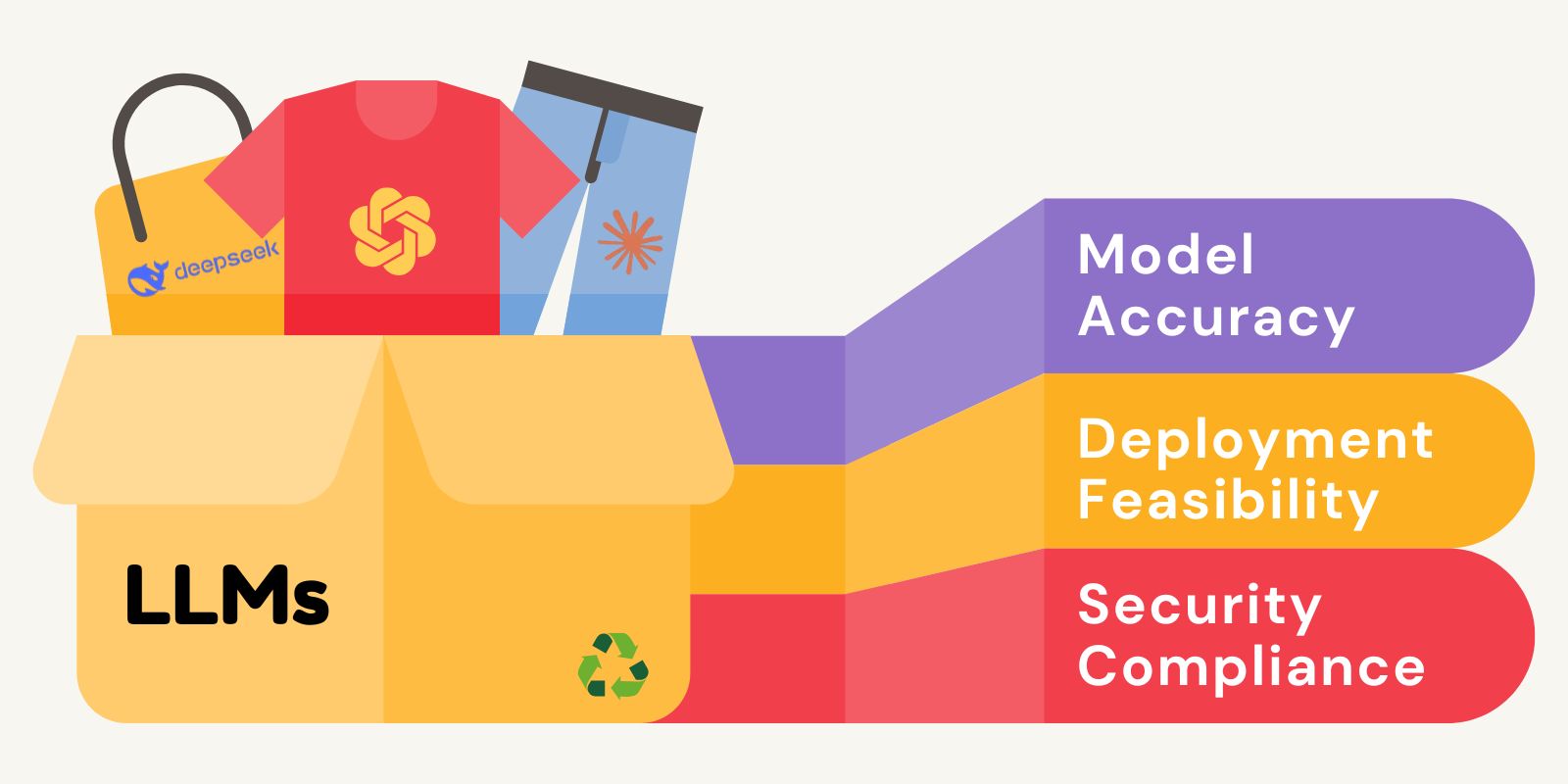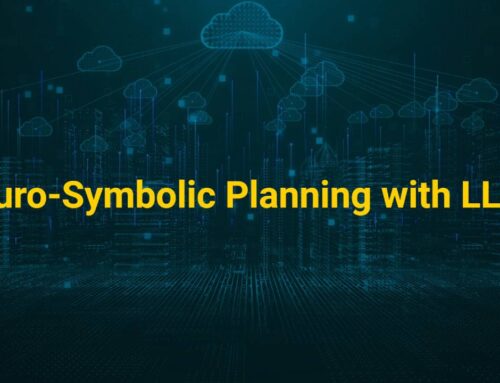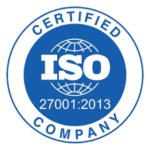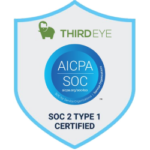A Technical and Business Perspective for Choosing the Right LLM for Enterprise Applications
As per the March 2025 survey report, Large Language Models are backing over 65% of AI implementation initiatives and enabling enterprises with automation, content generation, and advanced decision-making. But we cannot ignore the notable concern is the selection of appropriate LLMs for specific use cases. In 2025, reports indicate that 46% of companies abandoned their AI proofs-of-concept, and 42% discontinued most of their AI initiatives, citing issues related to data security, privacy, and escalating costs.
We found the root cause in the due diligence part. Enterprises lack expertise in selecting the most suitable LLMfor a specific use case and not analyzing factors such as model accuracy, cost-effectiveness, deployment feasibility, and security compliance.
Enterprises that strategically integrated LLMs, have reported a 40% reduction in operational costs and a 35% improvement in efficiency. In this article, I will try to provide an in-depth technical analysis of key enterprise use cases and a comparative evaluation of leading LLMs.
The Core Technologies Behind LLMs
Before comparing the LLMs, we need to do a background check. Basically, LLMs are built on advanced neural architectures to understand, generate, and manipulate human language with high precision. Now, let us explore what is running in the background of the LLMs, its kind of skill sets:
Transformer Architecture
LLMs are fundamentally based on the Transformer architecture, first introduced in the paper “Attention is All You Need” by Vaswani et al. (2017). This architecture eliminates recurrent structures and instead leverages self-attention mechanisms, enabling parallelization and improved scalability.
So, if we go ahead and explore the components of Transformer Architecture, it looks like:
Multi-Head Self-Attention (MHSA): MHSA captures long-range dependencies in text. It uses multiple attention heads to allow different subspaces of information to be processed simultaneously.
Formula:
Attention(Q,K,V) = softmax (QKT / √dk) V
We have seen a few advancements in 2025 for MHSA, such as FlashAttention-2, it is memory-efficient attention mechanism using tiling-based kernel optimizations and Sparse and Selective Attention Mechanisms whichImprove efficiency by only computing attention over a subset of tokens.
Feedforward Neural Networks (FFN): Each transformer block contains an FFN with ReLU, GeLU, or SwiGLU activation. We have seen optimizations in FFN like Mixture of Experts (MoE) and Conditional Computation.
Positional Encoding: Since transformers lack inherent sequence awareness (unlike RNNs), positional encoding is added to equip it with sequential awareness. Advancements like RoPE (Rotary Position Embeddings)in Llama models, empowering positional encoding with extrapolation to longer sequences. And with Alibi Attention, the linear position bias method improving generalization.
Tokenization & Preprocessing
LLMs require specialized tokenization techniques to convert raw text into model-readable tokens. We can mention a few trending tokenization techniques:
- Byte Pair Encoding (BPE): Splits words into frequent sub-word units.
- Unigram Language Model (ULM): Probabilistic token merging based on likelihood.
- Tiktoken (GPT-Specific): Optimized for OpenAI models, reducing memory usage.
- DeepSeek Adaptive Tokenization: Newest method combining morphological segmentation with dynamic token granularity.
Training Methodologies
LLMs undergo extensive pretraining followed by fine-tuning on specific domains.
Pretraining:
The pretraining process uses unsupervised learning on trillions of tokens from web data, books, and proprietary corpora. Then, we have seen use of Masked Language Modeling (MLM) to hide words and predicts them, the same have been used in BERT-style models. And let’s not forget about Causal Language Modeling (CLM), which is leveraged to predicts the next token given previous context, the same has been used in GPT models.
We are seeing some promising advancements in 2025 with Progressive Layer Training, that freezes lower layers after initial training to improve efficiency and Synthetic Data Augmentation, it uses LLMs to generate training data for themselves.
Fine-Tuning:
Talking about the Fine-Tuning, we must start with Supervised Fine-Tuning (SFT), to train models on domain-specific datasets. We use Reinforcement Learning with Human Feedback (RLHF) to aligns model to human preferences by optimizing a reward model.
Key Algorithmic Improvement in 2025:
Direct Preference Optimization (DPO): More stable alternative to RLHF.
Contrastive RLHF: Improves preference ranking consistency.
We can talk about Parameter-Efficient Fine-Tuning (PEFT). It reduces computational cost by tuning only a fraction of parameters.
Methods:
- LoRA (Low-Rank Adaptation): Injects trainable matrices into frozen layers.
- Prefix-Tuning: Adds tunable embeddings before the prompt.
- QLoRA (Quantized LoRA): Applies LoRA to 4-bit quantized models.
Efficient Inference & Optimization
As we know, inference efficiency is critical for deploying LLMs at scale. We use optimization techniques such as Quantization to convert model weights to lower precision (e.g., INT8, FP16, FP4).
There are a few latest advancements in Quantization like GPTQ (Quantized GPT) & AWQ (Activation-Aware Quantization) and SmoothQuant (Layer-wise adaptive quantization).
If we are talking about the optimization techniques, then Sparse Computation can be included in the discussion. It only activates the most relevant neurons per input. Sparse Computation uses techniques like Sparse MoEand Gated Experts.
We cannot miss Memory-Efficient Attention such as xFormer Variants (e.g., Performer, Linformer, Reformer) to reduce quadratic complexity.
Retrieval-Augmented Generation (RAG)
We can simply describe RAG as a core feature that combines LLMs with external knowledge retrieval systems. The industry is working on enhancing the RAG with advancements like:
- Hybrid Vector & Symbolic Retrieval: Uses dense embeddings + structured knowledge bases.
- Memory-Augmented Transformers (MAT): Persistent state-aware models retaining past interactions.
Data Security & Privacy Enhancements
Enterprises increasingly demand secure LLM deployment. It is important to keep the data safe while going for the automation. In 2024, the global average cost of a data breach reached $4.88 million, marking a 10% increase from the previous year. Though LLMs are using Privacy-Preserving Techniques to make the data security and privacy ground strong:
- Federated Learning: Trains LLMs across decentralized devices without sharing raw data.
- Differential Privacy: Adds noise to training data to protect individual contributions.
- Secure Multi-Party Computation (SMPC): Enables inference across multiple organizations without revealing private data.
We must understand that there are two types of LLMs – Cloud-based and On-Prem. And depending on that, we can assess the security ground of LLMs:
| Feature | Cloud-Based LLMs | On-Prem LLMs |
| Examples | OpenAI GPT-4 Turbo, Gemini 1.5, Claude 3, Mistral API | Llama 3, Falcon, DeepSeek, Mistral 7B, Open-LLM |
| Data Privacy | Higher risk—data is processed externally | Fully controlled—data stays within organization |
| Latency | Lower (if optimized and close to the cloud region) | Higher (depends on in-house hardware efficiency) |
| Compliance (GDPR, HIPAA, SOC 2) | Requires strict data governanceand cloud provider adherence | Easier compliance with internal policies |
| Customization | Limited fine-tuning options (mostly API-based) | Full control over model architecture & tuning |
| Scalability | Instantly scalable via cloud resources | Limited by in-house compute capacity |
| Inference Cost | Pay-as-you-go pricing, can be expensive at scale | High upfront cost, lower long-term cost |
| Security Risks | Potential risk of data exposure in multi-tenant environments | Fully isolated, reducing external attack vectors |
| Performance on Confidential Data | Less ideal for proprietary or classified information | Ideal for handling sensitive business data |
Multimodal Capabilities
As we see, enterprises prefers to go liberal with LLMs. We have worked on many use cases where the model get use to not only analyze textual but visual data too. So, modern LLMs need to process not just text but also images, audio, and video. And we call this Multimodal Capabilities.
The latest LLMs such as Gemini Ultra 2, GPT-5V, DeepSeek-Vision, CLIP 2.0 are becoming popular for their multimodal capabilities.
New Techniques are pushing the bar higher. For example, Cross-Attention Fusion, it integrates multimodal signals with higher precision and Self-Supervised Vision Learning, it reduces labeled data dependency.
Comparative Analysis of LLMs for Enterprise Use Cases
The table below summarizes the strengths and limitations of popular LLMs for various business use cases, incorporating key security and privacy considerations:
| Use Case | GPT-5 | Claude 3 | Llama 3 | DeepSeek | Gemini Ultra 2 | Mistral 7B | Falcon 2 |
| Customer Support Automation | ✅ Best accuracy, memory retention | ✅ Ethical, low hallucinations | ✅ Cost-effective on-prem | ✅ Multilingual, efficient | ✅ Multimodal, adaptive | ❌ Smaller ecosystem | ✅ Open-source, scalable |
| Enterprise Search | ✅ High accuracy, contextual recall | ✅ Bias mitigation, privacy-focused | ✅ On-prem, customizable | ✅ Optimized for retrieval | ❌ Lacks vector search integration | ❌ Limited large-scale tuning | ✅ Strong knowledge retrieval |
| Document Processing | ✅ Best for complex documents | ✅ Strong legal document analysis | ✅ Customizable, private | ✅ Structured data extraction | ✅ Multimodal, adaptable | ❌ Weaker NLP capabilities | ✅ Enterprise-ready processing |
| Code Generation | ✅ Industry-best for coding tasks | ❌ Limited for software | ✅ On-prem security | ✅ Code-specific optimizations | ❌ Needs tuning | ✅ Open-source, optimized for coding | ✅ Strong developer community |
| Security & Privacy | ❌ Cloud-based, potential data risk | ✅ Strongest privacy safeguards | ✅ Fully on-prem, secure | ✅ Data encryption & access control | ✅ Google’s AI security compliance | ✅ Lightweight with local deployment | ✅ Open-source, customizable security |
Use CasesBreakdownand Usage of LLMs for Them
Customer Support Automation
Technical Justification:
- LLMs understand and generate human-like responses, reducing reliance on human agents.
- They improve response accuracy via reinforcement learning and multi-turn conversation memory.
- Security consideration: Cloud-based LLMs like GPT-5 pose potential data risks, making on-prem options more secure.
Recommended Models:
- GPT-5: Best for nuanced queries but requires strict compliance measures.
- Claude 3: More ethical and reliable, with robust privacy safeguards.
- Llama 3: Cost-efficient for on-prem solutions, ensuring data control.
- DeepSeek: Excels in multilingual interactions with built-in encryption.
- Falcon 2: Open-source and scalable, customizable for enterprise security.
Enterprise Search & Knowledge Management
Technical Justification:
- LLMs leverage vector search to improve document retrieval accuracy.
- Retrieval-augmented generation (RAG) enhances real-time, knowledge-aware responses.
- Security consideration: Some models lack built-in privacy compliance, making enterprise-grade security features essential.
Recommended Models:
- GPT-5: Strong contextual understanding, but needs additional security layers.
- Claude 3: Bias-mitigated and secure for enterprise data processing.
- Llama 3: Best for on-prem, privacy-focused applications.
- DeepSeek: Optimized for large-scale enterprise search with encryption.
- Falcon 2: Strong for structured knowledge retrieval with self-hosting options.
Document Processing & Data Extraction
Technical Justification:
- LLMs structure unstructured data, enabling automated document parsing.
- They reduce manual data entry, improving efficiency and compliance.
- Security consideration: Compliance with data regulations like GDPR and HIPAA is crucial for sensitive document handling.
Recommended Models:
- GPT-5: Superior for legal and financial documents, but requires external security enhancements.
- Claude 3: Well-suited for structured legal analysis with privacy-first features.
- DeepSeek: Specialized in tabular and structured data extraction with encryption.
- Gemini Ultra 2: Multimodal for document and image-based extraction with Google security compliance.
- Falcon 2: Enterprise-ready for document automation with open-source customization.
Code Generation & Software Development Assistance
Technical Justification:
- LLMs accelerate software development by suggesting code, debugging, and automating repetitive tasks.
- Transformer-based architectures improve code quality and reduce errors.
- Security consideration: Open-source and on-prem models provide higher control over intellectual property and security.
Recommended Models:
- GPT-5: Industry leader in code generation accuracy but cloud-dependent.
- Mistral 7B: Optimized for software development workflows with local deployment options.
- Llama 3: Best for private, on-premise deployment ensuring IP security.
- DeepSeek: Efficient for coding tasks, though with limited community support.
- Falcon 2: Strong developer community and open-source accessibility.
Conclusion
The choice of LLM depends on enterprise-specific needs, including cost, scalability, domain adaptation, and security compliance. GPT-5 remains the gold standard for accuracy, while Claude 3 offers ethical safeguards and strong privacy features. Llama 3 and DeepSeek cater to enterprises prioritizing on-prem security and multilingual capabilities, respectively. Falcon 2 emerges as a strong open-source alternative for enterprises seeking flexibility and data control.
With security and privacy risks increasingly influencing AI adoption, businesses must align LLM selection with their compliance frameworks to optimize performance and minimize risks.






